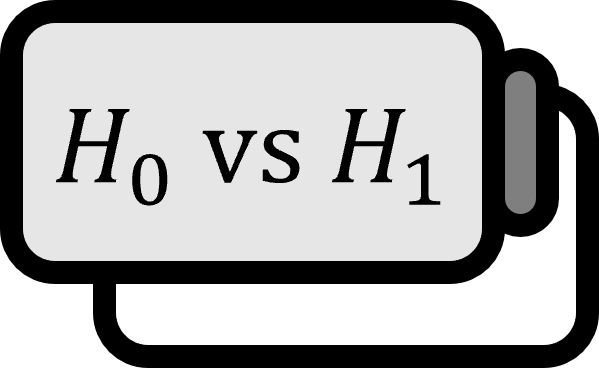Type I and Type II Errors Difference
Definition
In hypothesis testing, an error of not accepting $H_{0}$ when $H_{0}$ is true is called a Type 1 Error, and an error of accepting $H_{0}$ when $H_{0}$ is false is called a Type 2 Error.
Explanation
We use the term ‘accept’ for the null hypothesis and ‘reject’ for the alternative hypothesis. If there is sufficient evidence supporting the null hypothesis, it means ‘rejecting the alternative hypothesis and accepting the null hypothesis’. If there is not enough evidence supporting the null hypothesis, it means ’not being able to reject the alternative hypothesis, thus not accepting the null hypothesis’.
Examples where Type 1 Error is more severe
Take a trial as an example, where the null hypothesis is ’the defendant is innocent’. Judging an innocent person as guilty would be a Type 1 Error. Conversely, failing to prove the guilt of a person who is indeed guilty and judging them as innocent would be a Type 2 Error. Given the principle of ‘presumption of innocence’ is such that ‘better ten guilty persons escape than one innocent suffer’, Type 1 Error can be considered much more severe.
Examples where Type 2 Error is more serious
If it comes to diagnosing whether a patient has cancer, the null hypothesis would be ’there is no cancer’. Given the timing of diagnosis can greatly affect the course and prognosis of treatment, the risk of failing to correctly diagnose a cancer patient is greater. In popular culture (movies, dramas), there might be plots where someone wrongly diagnosed with terminal cancer lives life recklessly, but in reality, where lives are at stake, one should simply undergo re-examination. Of course, it involves mental distress, spending money, and using up time, but it is preferable to missing a cancer patient who needs timely treatment.
Shouldn’t Type 1 Error be more severe?
No, that’s a misunderstanding of the concept of errors. Social conventions, the seriousness of the issue, or the risks involved when an error occurs cannot be the criteria for establishing a null hypothesis. Suppose there is a severe incurable disease. A diagnostic method for this disease is developed, and a null hypothesis is set. Even if medical advancements make the disease less dangerous, even in its terminal stages, the null hypothesis does not change.
More severe errors should not dictate the null hypothesis as a Type 1 Error. Assuming a safer situation as the null hypothesis amounts to fitting hypothesis testing incorrectly to Type 1 Error. It is true that in many cases, Type 1 Error seems more risky to those just starting to learn statistics, but this should remain within the realm of common sense and prejudice rather than being seen as scientific fact. (In some fields, there could be many more instances where Type 2 Error is more serious.)
